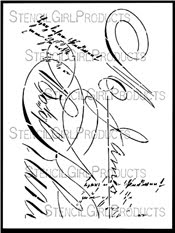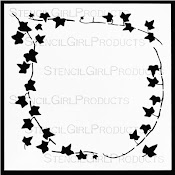StencilGirl Talk: Mary Beth Shaw's VLOG: March 2022
-
StencilGirl Talk: Mary Beth Shaw's VLOG: March 2022: Join Mary Beth in
Amsterdam and Paris! Click here for more information and registration!
Monday, October 27, 2014
Sunday, October 26, 2014
Monday, October 20, 2014
Monday, October 13, 2014
Friday, October 10, 2014
Stencil-and-Scrape Technique, re-visited
Earlier, I've posted about a technique that I call stencil-and-scrape
-- on Jan. 4 , March 14 and April 2 --
where I've supplied numerous photos with directions.
This technique is simply a wet version of the rubbings technique; traditional rubbings are done with soft-lead pencil or crayon, whereas I use acrylic paint and an old credit card.
With masking tape, I secure a stencil to the work surface; then I tape a sheet of thin paper over that. After adding a few dollops of acrylic paint to the top of the paper, I scrape the paint downward over the paper, pressing evenly to pick up the patterns in the stencil.
Just recently I made more stencil-and-scrape papers using my 9"X12" stencil Twinship. Since I planned to use the finished paper in a multi-layered collage, I chose deli paper because it's thin; and its translucency allows underneath colors to show thru. Below is one of the completed papers.
After the paint dried, I cut the papers into shapes and added them to a collage on canvas, shown below. To better see the stencil-and-scrape papers, click on the image --
Thursday, October 9, 2014
Subscribe to:
Posts (Atom)






















































































